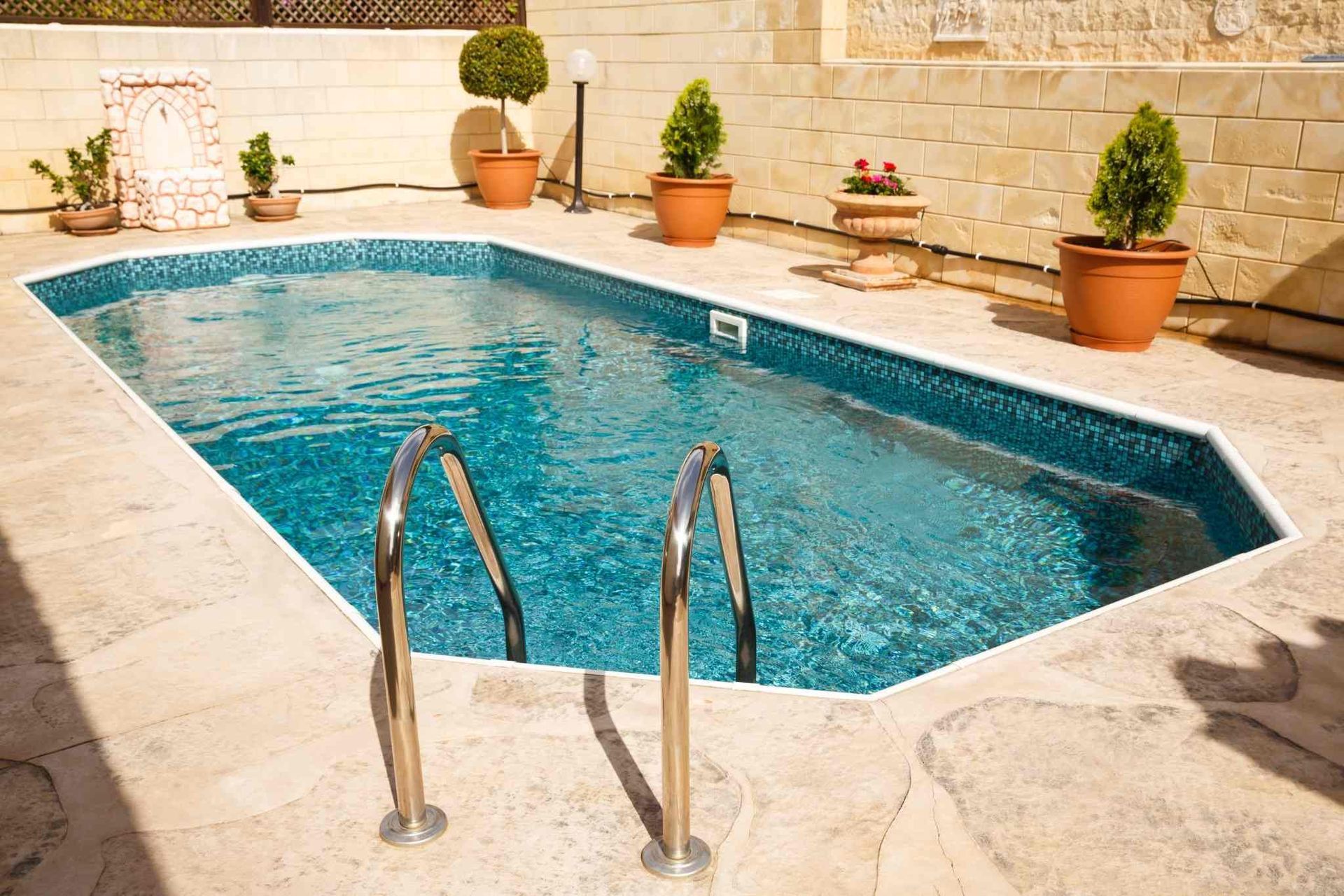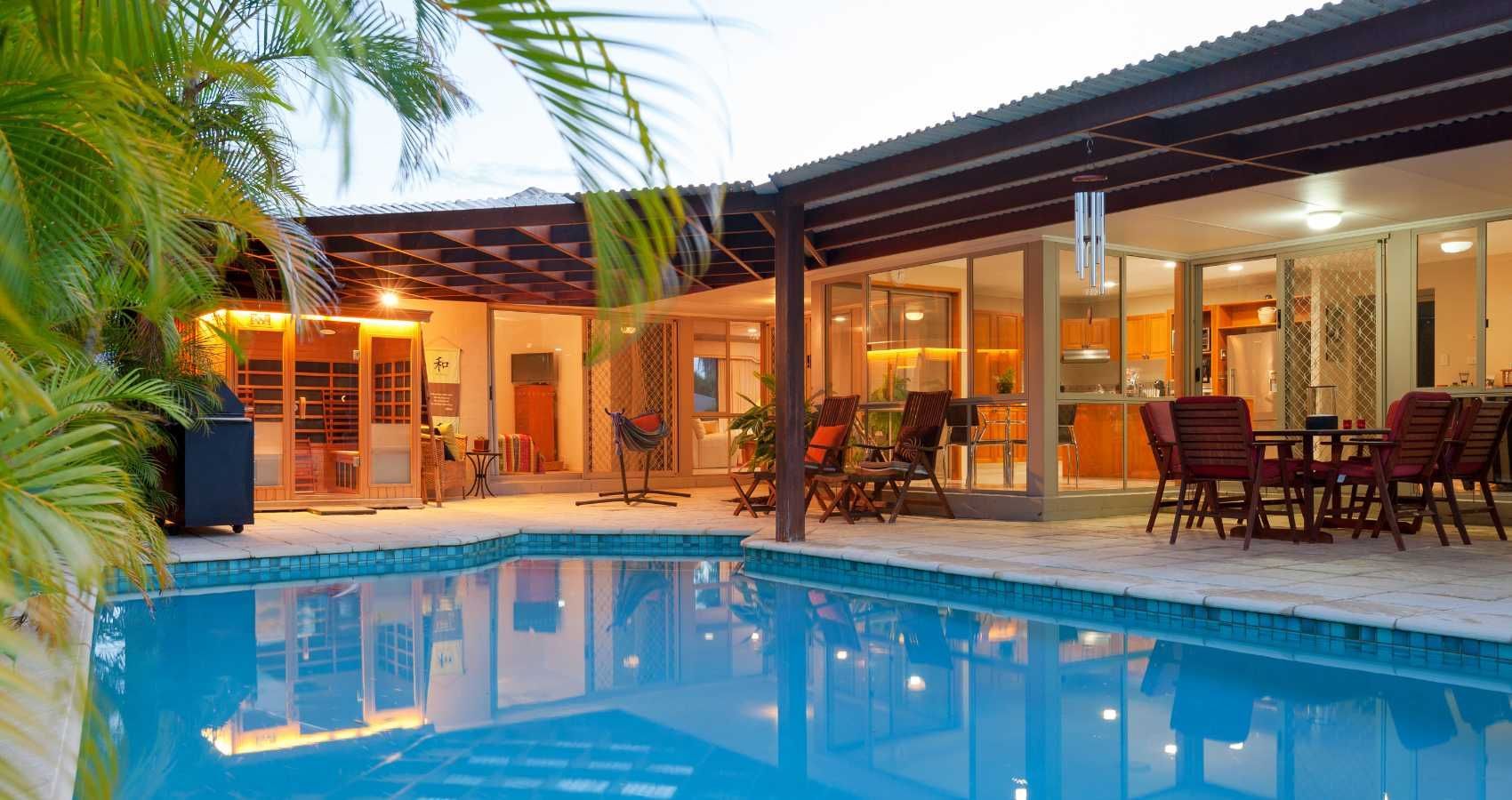How Often Should You Run Your Pool Pump?
Your pool pump is like the heart of your swimming pool—circulating water, keeping it clean, and ensuring every dip is as refreshing as the last. But just like running your heart too fast or too slow, running your pump at the wrong intervals can waste energy, shorten its lifespan, and even affect water quality.
Whether you’re trying to cut down on electricity bills or simply make the most of your pool investment, the challenge is knowing exactly how often to run it so water stays clean without wasting energy or straining equipment.
Here are six key factors that determine the ideal pool pump run time.
Table of Contents
6 Key Factors That Determine the Ideal Pool Pump Run Time
2. Climate and Seasonal Changes
3. Bather Load and Activity Level
4. Type of Pump and Speed Settings
5. Filtration System Efficiency
6. Water Chemistry and Environmental Factors
How Often Should You Run Your Pool Pump?
How to Calculate Pool Turnover Rate
How to Maintain Water Clarity Without Overrunning the Pump
Key Takeaways
✔ Running a pool pump long enough to achieve at least one full pool turnover rate daily is essential for clear, healthy water.
✔ Factors like pool size, climate, and bather load directly affect how often you should run your pool pump.
✔ Most residential pools require 8–12 hours of pump operation each day for optimal results.
✔ Variable-speed pumps can run longer at lower speeds to save energy while meeting turnover needs.
✔ Clean filters and balanced water chemistry reduce how long you should run my pool filter each day.
✔ Seasonal adjustments help optimize how long to run the pool pump for changing weather and usage.
✔ Skimming, vacuuming, and proper jet positioning support water clarity without overrunning the pump.
✔ Observing water clarity and testing chemistry regularly ensures how long to run a variable speed pool pump is based on real conditions, not guesswork.

6 Key Factors That Determine the Ideal Pool Pump Run Time
1. Pool Size and Volume
The size and volume of a pool directly influence how often the pump should run to keep water clean and balanced. Larger pools require more time to achieve a full pool turnover rate, while smaller ones can often reach that goal faster. Understanding volume is the first step toward setting a run schedule that
keeps water clear without unnecessary energy costs.
- Calculating the Total Gallons: Measuring length, width, and average depth, and multiplying by the correct conversion factor gives the total water volume. This number helps determine how many hours the pump must run each day to achieve the correct pool turnover rate.
- Matching Pump Capacity to Pool Volume: A pump with a lower flow rate will take longer to circulate all the water, especially in large pools. Oversized pumps can shorten run time but may waste energy if not scheduled properly.
- Adjusting for Shape and Features: Pools with irregular shapes, attached spas, or water features can require longer circulation times. The added water volume and uneven flow paths mean more run hours to ensure even filtration across all areas.
2. Climate and Seasonal Changes
Weather patterns and seasonal shifts have a direct effect on how often the pool pump should run. Hot summers, rainy seasons, and even cooler months all bring different challenges for water clarity. Adapting run times based on the season prevents algae blooms, chemical imbalances, and unnecessary strain on equipment.
- Hot Weather and Increased Sunlight: In summer, heat speeds up algae growth and chlorine breakdown. Running the pump longer helps maintain the pool turnover rate needed to keep water clear during extended daylight hours.
- Rainy or Stormy Conditions: Heavy rain introduces organic debris and dilutes pool chemicals. Extending pump cycles after storms ensures debris is filtered and the water chemistry rebalances quickly.
- Cooler Seasons with Lower Use: In autumn or winter, the water stays cleaner for longer, so run times can be reduced. For example, an eight-hour summer cycle might be cut to four or five hours while still achieving the needed pool turnover rate.
3. Bather Load and Activity Level
The more people in the pool, the more contaminants and debris enter the water. High-activity days add sunscreen, body oils, hair products, and dirt—all of which put extra demand on the filtration system. Adjusting how long to run a pool pump after heavy use ensures water stays crystal clear.
- High-Use Days: Large family gatherings or pool parties mean more bacteria and particles in the water. Doubling the circulation time helps the filter manage the increased load effectively.
- Regular Exercise Use: Lap swimmers and daily workouts introduce small amounts of debris consistently. Running the pump in shorter, more frequent cycles keeps the pool turnover rate steady without overworking the system.
- Light or Occasional Use: Pools used only a few times a week may maintain water clarity with reduced daily run time. However, a full cycle is still recommended after each swim day to protect water quality.
4. Type of Pump and Speed Settings
Not all pumps work the same, and the choice between single-speed, dual-speed, or variable-speed models changes the approach to scheduling. A variable-speed pump, for example, can run longer at a lower speed while using less electricity, which changes the equation for how long to run a variable-speed pool pump efficiently.
- Single-Speed Pumps: These pumps operate at one high speed, moving water quickly but consuming more power. In most cases, running them six to eight hours meets the required pool turnover rate.
- Dual-Speed Pumps: Offering both high and low settings, these pumps can run longer on low speed for energy savings. High speed is best reserved for vacuuming or when water needs faster turnover.
- Variable-Speed Pumps: These allow precise RPM adjustments, making it easier to balance water clarity with efficiency. Knowing how long to run a variable speed pool pump depends on the selected speed and desired turnover time.
5. Filtration System Efficiency
The filter type and condition play a big role in deciding how long the pump should run. A clean, high-quality filter can remove contaminants faster, which may reduce the daily run time without sacrificing water clarity. On the other hand, a clogged or undersized filter forces the pump to work longer to achieve the pool turnover rate.
- Sand Filters: These generally require longer run times to capture fine particles. Running the pump longer after storms or heavy use prevents cloudiness.
- Cartridge Filters: With finer filtration, these can clean water more quickly. For those asking how long I should run my pool filter each day, the answer depends partly on how often the cartridge is cleaned or replaced.
- Diatomaceous Earth (DE) Filters: These offer the finest filtration and can achieve clarity with shorter run times. However, they require regular backwashing and recharging to stay effective.
6. Water Chemistry and Environmental Factors
Even with perfect scheduling, poor water chemistry can undo a pump’s hard work. Imbalanced pH, low chlorine, and high contaminants from nearby landscaping can increase the need for longer run cycles. Monitoring conditions helps determine how often you should run your pool pump for the best results year-round.
- Chemical Balance: Keeping pH, alkalinity, and sanitizer levels in range reduces the need for extended cycles. Unbalanced water can promote algae growth, requiring more frequent pool turnover cycles to restore clarity.
- Nearby Trees and Plants: Leaves, pollen, and organic matter fall into the pool and increase debris levels. Running the pump longer during high-shedding seasons prevents clogs and cloudy water.
- Dust and Air Quality: In dry climates or during construction nearby, fine dust can quickly cloud the pool. Extending the schedule for how long to run the pool pump during these periods keeps the filtration effective.
How Often Should You Run Your Pool Pump?
The ideal schedule for running a pool pump depends on factors such as pool size, climate, bather load, and equipment type, but most experts recommend operating it long enough each day to achieve at least one full pool turnover rate.
For many residential pools, this means
running the pump between 8 and 12 hours daily, either in one continuous cycle or split into multiple shorter cycles for better circulation. This practice reflects the growing importance of efficient, high-performing equipment in today’s market, where the global
swimming pool pumps industry is
projected to reach USD 2.47 billion in 2025.
Operators using variable-speed pumps often extend run time at lower speeds to improve energy efficiency while still meeting the required water turnover. Adjustments should be made seasonally or after heavy use to ensure the schedule supports both water clarity and balanced chemistry.
How to Calculate Pool Turnover Rate
Calculating the pool turnover rate is the most accurate way to decide how long a pump should run each day. Instead of guessing, this method uses pool volume and pump capacity to set a schedule that keeps water clean, chemicals balanced, and energy use in check. By following a few steps, operators can determine whether they’re meeting the recommended circulation goals or need to adjust run times.
1. Measure the Pool’s Dimensions
Start by measuring the length, width, and average depth of the pool. Multiply these numbers together to get the cubic footage, then convert to gallons using the standard conversion factor (7.48 gallons per cubic foot). This volume is the foundation for knowing how often you should run your pool pump effectively.
2. Identify the Pump’s Flow Rate
Check the manufacturer’s specifications or the pump label for gallons per minute (GPM) or gallons per hour (GPH). This number tells how much water moves through the system in a set period. Knowing this helps in deciding how long to run the pool pump for a complete turnover.
3. Use the Turnover Formula
Divide the total pool volume (in gallons) by the pump’s flow rate (in gallons per hour). The result is the number of hours it takes to achieve one pool turnover rate. This calculation is essential for setting accurate pump schedules.
4. Account for Seasonal Adjustments
Hot weather, storms, or heavy use may require running the pump longer than the calculated time. Colder months or low-use periods may allow for shorter operation. Adjusting based on the season ensures the correct pool turnover rate year-round.
5. Consider Pump Type and Speed Settings
A variable-speed pump may need more total run time at lower speeds compared to a single-speed model. However, the energy savings often outweigh the extra hours. Understanding how long to run a variable speed pool pump depends on matching speed with turnover goals.
6. Test and Fine-Tune the Schedule
After setting an initial run time, observe water clarity and chemical stability for a week. If the water remains clean and balanced, the schedule is on target; if not, increase run time slightly. This ongoing review ensures the answer to how long should I run my pool filter each day is based on real results, not just calculations.
How to Maintain Water Clarity Without Overrunning the Pump
With in-ground pool costs averaging $65,909, protecting that investment means running the pump efficiently—avoiding wasted energy and equipment wear while still preventing cloudy water and algae. The key is smart maintenance, balanced chemistry, and strategic circulation to keep water clear.
1. Keep the Filter Clean and in Good Condition
A dirty or clogged filter forces the pump to work harder and longer to achieve the right pool turnover rate. Cleaning or replacing filter media on schedule improves efficiency and keeps water clearer in less time. This helps shorten how long the pool pump runs each day without sacrificing cleanliness.
2. Maintain Proper Chemical Balance
Balanced pH, chlorine, and alkalinity prevent bacteria and algae growth, reducing the filtration load. When chemicals are maintained at ideal levels, the pump doesn’t need to run as long to maintain clarity. Consistent testing helps determine how long I should run my pool filter each day for stable water quality.
3. Skim and Vacuum Regularly
Removing debris before it sinks or circulates through the system lightens the pump’s workload. Hand-skimming and vacuuming also prevent clogged baskets and filters, allowing shorter run times. This makes it easier to adjust how often you should run your pool pump without risking cloudy water.
4. Use Circulation Aids Like Return Jets
Properly positioned return jets help move water into dead spots where debris can collect. This improved flow means the pump can achieve a full pool turnover rate in less time. Adjusting jet angles can reduce how long to run a variable speed pool pump while still reaching all areas of the pool.
5. Shock the Pool as Needed
Shocking after heavy use, storms, or algae outbreaks quickly restores water clarity. This proactive care minimizes how long the pump must run afterward to clear contaminants. It also keeps the pool turnover rate steady without overextending daily cycles.
6. Monitor and Adjust Seasonally
Run time needs to change with water temperature, sunlight exposure, and bather load. Reducing hours during cooler, low-use months can save energy while keeping water clean. Seasonal adjustments help manage how long to run the pool pump efficiently throughout the year.
Frequently Asked Questions
What is the minimum turnover rate to obtain 100% clarity in a pool?
Most experts recommend at least twice in one full pool turnover rate of every 24 hours to maintain crystal-clear water. This means circulating the entire volume of the pool through the filter at least once a day. In high-use or hot weather conditions, a second turnover may be needed to ensure 100% clarity.
What is a normal pool reading?
A normal pool reading refers to balanced water chemistry, typically with pH between 7.4 and 7.6, free chlorine between 1–3 ppm, and total alkalinity between 80–120 ppm. These levels help the pump and filter work effectively without overextending run time. Keeping readings within these ranges supports a healthy pool turnover rate and stable water clarity.
How many hours a day should a pool pump run?
For most residential pools, 8–12 hours a day is enough to achieve one full turnover and maintain water quality. The exact number depends on factors like pool size, climate, and equipment efficiency. Variable-speed pumps may run longer at lower speeds to save energy while still meeting turnover requirements.
What is the best schedule for a pool pump?
The best schedule is one that ensures a full pool turnover rate while avoiding unnecessary energy use. Many pool owners split the run time into two or more cycles—morning and evening—to keep water circulating throughout the day. Seasonal adjustments and bather load changes should be factored into the schedule.
Should I leave my pool filter running constantly?
Running a pool filter constantly isn’t usually necessary and can increase energy costs and wear on the system. Most pools maintain clarity with calculated run times that meet turnover needs without 24/7 operation. Continuous operation may be helpful in extreme weather, during algae treatment, or for commercial pools with heavy use.
Build Your Dream Pool with FJV Construction in Danbury, CT
At FJV Construction, we bring expert craftsmanship and attention to detail to every pool project in Danbury, CT. From custom inground pool installation to complete pool renovations, our team delivers results that blend beauty, durability, and functionality. We manage every step with precision to ensure timelines are met, materials are top quality, and the final design reflects each client’s vision.
Whether it’s upgrading an existing pool or starting from scratch, we’re ready to transform backyards into stunning retreats built to last.
Work with us today!




